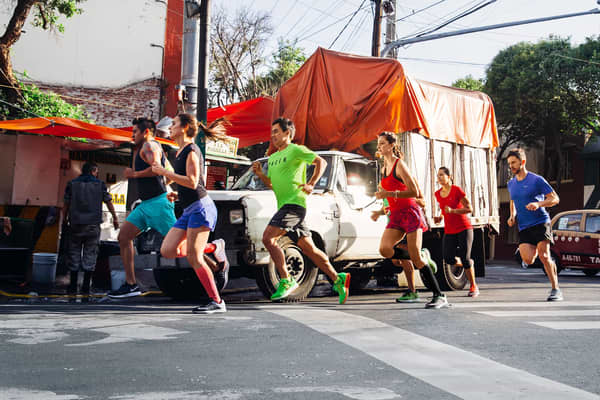How Many Calories Do You Burn on a Run?
Sport & Activity
The number of calories burned when running depends on a variety of factors, including your age, weight and the type of run you're doing.

Running is a great way to burn calories. If weight loss is your top fitness goal at the moment, incorporating running into your routine can help you increase your total daily energy expenditure. But how many calories do you burn during a run? And are certain types of running workouts more effective for fat burning?
What Factors Influence Calorie Burn?
There isn't a universal answer to the question, "How many calories will I burn during a run?" Here's why: everyone is different. Your body dictates how many calories you burn during a certain exercise. Plus, you might perform that exercise at different intensities, which would equate to a different calorie-burning total.
Your basal metabolic rate (BMR) is how many calories you burn at rest. It contributes 70 percent to your total daily energy expenditure (TDEE). Your BMR affects how many calories you'll burn in a run. It is influenced by a few factors, including:
- Age
- Height
- Weight
- Gender
- Body composition (ratio of muscle to fat)
- Genetics
- Hormones
- Et cetera
For example, a person who is 6 feet, 2 inches tall will burn more calories than someone who is 5 feet, 4 inches. More calories are burned at rest when you have more body tissue to keep active. In short, the energy cost is higher.
An individual with a high percentage of lean muscle mass will burn more calories than someone at the same weight but with less muscle and more fat. Muscle is metabolically active, so burns more calories at rest.
These factors affect how many calories you burn while running, even if the duration, distance and intensity are controlled.
How to Calculate Calories Burned
To estimate how many calories you will burn in a run, use a calorie burn calculator. By inputting your body weight, age, height, gender and fat mass into the calculator, you'll get a reading on how many calories you can expect to burn. There are a number of formulas these calculators will use to generate an estimate.
These formulas are based on your BMR or body mass index (BMI). You can also use a fitness tracker. Fitness trackers monitor your activity levels, duration and heart rate to get an estimate of calories burned during a workout.
What Is the Average Amount of Calories Burned from Running?
Harvard Medical School measured how many calories are burned during 30 minutes of running in individuals of three different weights (in pounds). Here's what was found.
Activity
Running 5 mph
Running cross-country
Running 6 mph
Running 7.5 mph
Running 10 mph
57kg person
240
255
495
375
453
70kg person
288
316
360
450
562
84kg person
336
377
420
525
672
As you can see, in nearly all cases, the bigger your body size, the more calories you burn. This is due to a greater energy cost.
What Types of Running Burn More Calories?
The faster or longer you run, the more calories you burn. That's because distance and speed matter. As your heart rate increases when you exercise, you use more energy. A faster heart rate uses more energy. This also increases the amount of calories burned post-run, as your body recovers. A one-mile run performed at a moderate intensity isn't going to burn the same as a five-mile moderate-intensity run.
However, if the one-mile run is performed at a high intensity—interval sprints for example—it just might.
High-intensity interval training (HIIT) running has been known to burn more calories than longer running sessions, despite being performed for six to 15 minutes. This contradicts the belief that running for longer will always burn more calories.
When you run in the anaerobic heart rate zone, also known as the "after-burn effect", you are working without oxygen. Your body is forced to break down glycogen to produce ATP. It has a high energy cost and requires longer periods of oxygen recovery. This process is known as excess post-exercise oxygen consumption (EPOC).
A study conducted by Azusa Pacific University measured the total calorie burn from a six-minute HIIT workout. Due to EPOC and the after-burn effect, the top 20 percent of the participants burned 400 calories for 24 hours post-workout, despite only burning about 63 calories on average in the six-minute session.
Low-intensity steady state (LISS) cardio is performed aerobically for approximately an hour. Aerobic means 'with oxygen', thus not creating the EPOC effect. The total amount of calories burned are burned during the run. This is still an effective way to lose weight because you're still increasing your energy expenditure and creating a calorie deficit. Particularly if you're jogging long distances. Increasing the intensity—rather than the distance—does have more favourable outcomes for calories burned.
Speed is just one way to increase the intensity of running to burn more calories. Running on an incline is another intensity strategy. This could be done by setting an incline on a treadmill or by running up hills. Even if your pace is slower than it would be on a flat surface, running uphill activates nine percent more muscle fibres with each stride. This requires more energy, and thus burns more calories.





